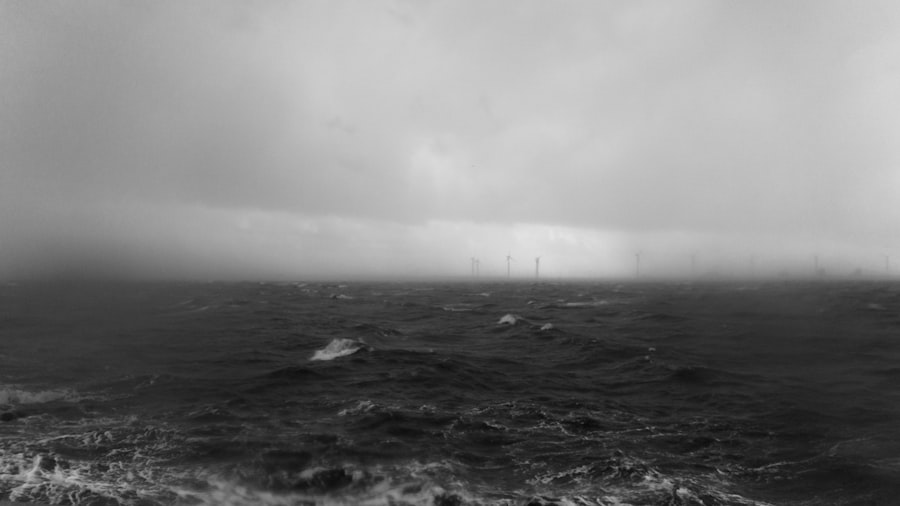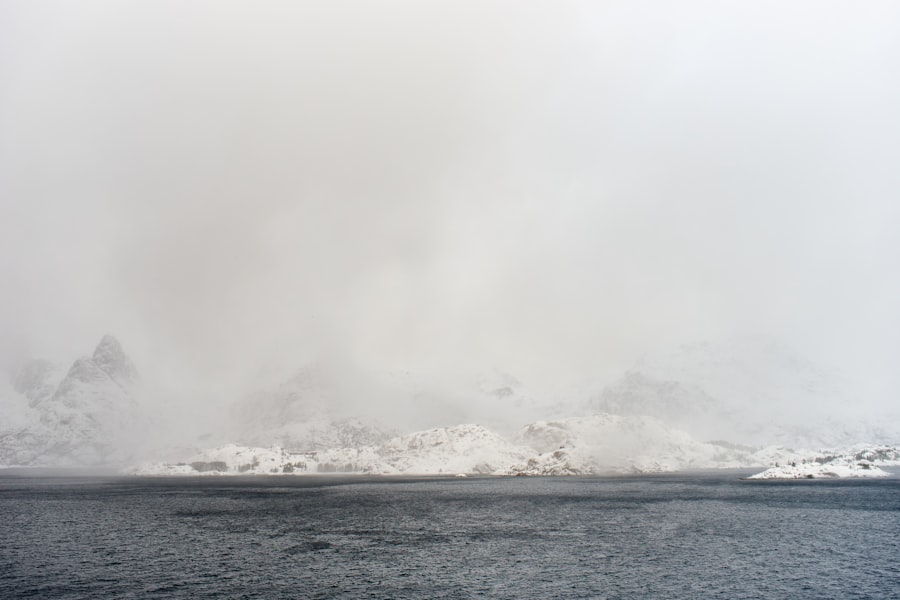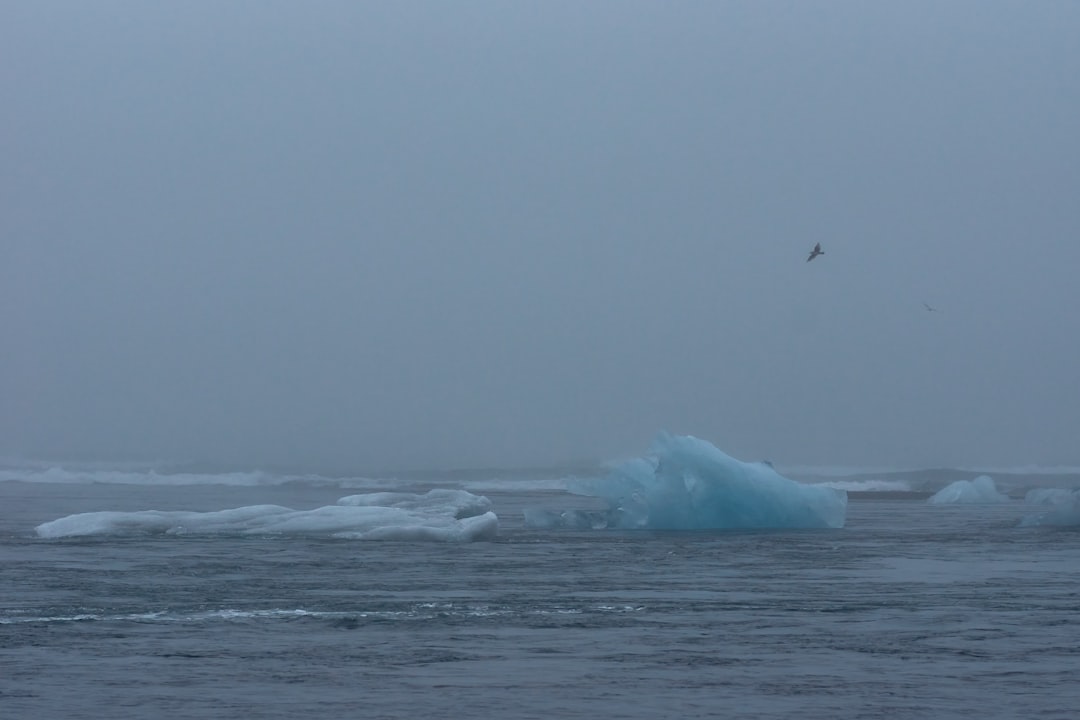The Drake Passage, a body of water situated between the southern tip of South America and Antarctica, is renowned for its tumultuous seas and unpredictable weather. Named after the English explorer Sir Francis Drake, who navigated these waters in the late 16th century, the passage serves as a critical maritime route connecting the Atlantic and Pacific Oceans. Spanning approximately 800 kilometers (500 miles) in width, it is often regarded as one of the most challenging stretches of ocean for sailors due to its fierce winds and high waves.
The Drake Passage is not only a geographical marvel but also a vital ecological zone that plays a significant role in global oceanic systems. The passage is characterized by its unique geographical features, including the South Shetland Islands to the north and the Antarctic Peninsula to the south. This positioning creates a natural funnel effect, intensifying the winds that sweep through the area.
As a result, the Drake Passage has become synonymous with rough seas and unpredictable weather patterns, making it both a daunting challenge for mariners and a fascinating subject for scientists studying ocean dynamics. The interplay of these elements contributes to the passage’s reputation as a formidable yet essential corridor for maritime navigation.
Key Takeaways
- The Drake Passage is a treacherous body of water located between South America’s Cape Horn and the South Shetland Islands of Antarctica.
- The weather in the Drake Passage is characterized by strong winds, high waves, and rapidly changing conditions, making it one of the roughest seas in the world.
- The ocean currents in the Drake Passage play a crucial role in supporting diverse marine life, including penguins, seals, and whales.
- Climate change is impacting the Drake Passage, leading to rising sea temperatures and changes in marine ecosystems.
- Scientific research in the Drake Passage is essential for understanding climate change, marine life, and the impact of human activities on this remote region.
Weather patterns and climate
The weather patterns in the Drake Passage are notoriously volatile, influenced by a combination of factors including ocean currents, topography, and atmospheric conditions. The region experiences strong westerly winds known as the “Roaring Forties,” which can lead to sudden storms and high waves. These winds are particularly fierce during the winter months when the temperature contrasts between the land and sea are most pronounced.
The result is a climate that can shift dramatically within hours, posing significant risks to vessels traversing these waters. In addition to wind patterns, precipitation in the Drake Passage varies considerably throughout the year. Summer months tend to bring milder conditions, with occasional rain showers, while winter can see heavy snowfall and ice formation.
The temperature in this region rarely rises above freezing, making it inhospitable for many forms of life. However, despite these harsh conditions, certain species have adapted to thrive in this extreme environment, showcasing nature’s resilience in the face of adversity.
Ocean currents and marine life

The Drake Passage is a crucial area for ocean currents, particularly the Antarctic Circumpolar Current (ACC), which flows uninterrupted around Antarctica. This current plays a vital role in regulating global climate by redistributing heat and nutrients across the oceans. The ACC is responsible for mixing waters from different ocean basins, which helps maintain the ecological balance in marine environments.
As it flows through the Drake Passage, it influences local weather patterns and supports a diverse array of marine life. The rich biodiversity found in the Drake Passage is a testament to its ecological significance. The nutrient-rich waters support an abundance of phytoplankton, which forms the base of the food chain.
This, in turn, attracts various species of krill, fish, and larger marine mammals such as seals and whales. The passage is particularly famous for its populations of humpback whales and orcas, which migrate through these waters in search of food. The unique combination of ocean currents and nutrient availability creates an environment where life flourishes despite the harsh conditions.
Impact of climate change
| Metrics | Impact of Climate Change |
|---|---|
| Temperature | Rising global temperatures leading to heatwaves and extreme weather events |
| Sea Level | Rising sea levels leading to coastal flooding and erosion |
| Extreme Weather | Increased frequency and intensity of hurricanes, storms, and droughts |
| Ecology | Disruption of ecosystems, loss of biodiversity, and extinction of species |
| Agriculture | Changes in precipitation patterns affecting crop yields and food security |
Climate change poses a significant threat to the delicate balance of ecosystems within the Drake Passage. Rising global temperatures are leading to increased melting of ice sheets in Antarctica, which contributes to rising sea levels and alters salinity levels in surrounding waters. These changes can disrupt established marine habitats and affect species that rely on stable conditions for survival.
Additionally, warmer waters may lead to shifts in fish populations, impacting both local ecosystems and commercial fishing industries. The effects of climate change are not limited to marine life; they also extend to weather patterns in the region. Increased frequency and intensity of storms can make navigation through the Drake Passage even more perilous for ships.
Furthermore, changes in precipitation patterns may lead to altered freshwater input into the ocean, further complicating existing environmental challenges. As scientists continue to study these impacts, it becomes increasingly clear that urgent action is needed to mitigate climate change’s effects on this vital maritime corridor.
Research and scientific studies
The Drake Passage has long been a focal point for scientific research due to its unique environmental conditions and critical role in global ocean circulation. Numerous studies have been conducted to better understand the dynamics of ocean currents, weather patterns, and marine ecosystems in this region. Researchers utilize advanced technologies such as satellite imagery and underwater drones to gather data on temperature fluctuations, salinity levels, and biodiversity.
One significant area of research involves monitoring the impacts of climate change on marine life within the Drake Passage. Scientists are particularly interested in how rising temperatures affect species distribution and reproductive patterns among key organisms like krill and fish. By understanding these changes, researchers hope to develop strategies for conservation and sustainable management of marine resources.
The findings from studies conducted in this region not only contribute to local knowledge but also have broader implications for global climate science.
Navigation and shipping challenges

Navigating through the Drake Passage presents numerous challenges for shipping vessels due to its unpredictable weather and treacherous waters. The combination of strong winds, high waves, and rapidly changing conditions can create hazardous situations for even experienced mariners. As a result, many shipping companies take extra precautions when planning routes through this area, often opting for alternative paths that may be longer but safer.
In addition to natural challenges, there are also logistical considerations that complicate navigation in the Drake Passage. The region is relatively remote, with limited access to ports or safe havens for vessels in distress. This isolation means that ships must be well-prepared for emergencies and equipped with advanced navigation systems to ensure safe passage.
Despite these challenges, the Drake Passage remains an essential route for international shipping, particularly for vessels transporting goods between South America and other parts of the world.
Historical significance
The historical significance of the Drake Passage cannot be overstated. It has served as a critical maritime route since the age of exploration when early navigators sought new trade routes and territories. Sir Francis Drake’s voyage through these waters in 1578 marked one of the first recorded passages around Cape Horn, paving the way for future explorers and traders.
His journey not only demonstrated the potential for maritime navigation in this challenging region but also highlighted its strategic importance. Over the centuries, the Drake Passage has witnessed numerous expeditions aimed at scientific discovery and exploration. From early whalers seeking lucrative hunting grounds to modern-day researchers studying climate change impacts, this body of water has played a pivotal role in shaping human understanding of our planet’s oceans.
The passage’s rich history serves as a reminder of humanity’s enduring quest for knowledge and exploration in even the most inhospitable environments.
Tourism and exploration
In recent years, tourism in the Drake Passage has grown significantly as adventurers seek to experience its breathtaking landscapes and unique wildlife. Cruise lines offer expeditions that allow travelers to explore Antarctica while navigating through these iconic waters. Tourists are drawn not only by the allure of pristine natural beauty but also by opportunities to witness remarkable wildlife such as penguins, seals, and whales up close.
However, increased tourism also raises concerns about environmental impacts on this fragile ecosystem. The influx of visitors can lead to disturbances in wildlife habitats and contribute to pollution if not managed responsibly. As such, there is an ongoing dialogue among stakeholders about how best to balance tourism with conservation efforts in order to protect the delicate balance of life within the Drake Passage while still allowing people to experience its wonders.
Conservation efforts
Conservation efforts in the Drake Passage are crucial for preserving its unique ecosystems amid growing threats from climate change and human activity. Various organizations work tirelessly to promote sustainable practices among industries operating in or near these waters. Initiatives include establishing marine protected areas (MPAs) that restrict certain activities such as fishing or shipping in sensitive regions to safeguard biodiversity.
Additionally, international cooperation plays a vital role in conservation efforts within this area. Countries bordering Antarctica have come together under agreements like the Antarctic Treaty System to ensure responsible stewardship of marine resources while promoting scientific research collaboration. These collective efforts aim not only to protect marine life but also to foster awareness about environmental issues affecting this critical region.
Future outlook and predictions
Looking ahead, the future of the Drake Passage remains uncertain as climate change continues to pose significant challenges for its ecosystems and navigation routes.
However, there is also hope on the horizon as awareness grows regarding conservation efforts needed to protect this vital maritime corridor. Advances in technology may provide new tools for monitoring environmental changes while promoting sustainable practices among industries operating within or near these waters. By prioritizing research collaboration and international cooperation, stakeholders can work together towards ensuring a healthier future for both marine life and human activities reliant on these critical ecosystems.
In conclusion, the Drake Passage stands as a remarkable testament to nature’s power and resilience amidst challenging conditions. Its tumultuous waters have shaped human history through exploration while serving as an essential corridor for global shipping today. However, with climate change posing unprecedented threats to its ecosystems and navigation routes alike, urgent action is needed to safeguard this vital region for future generations.
Through continued research efforts aimed at understanding environmental changes alongside responsible tourism practices promoting conservation awareness among visitors alike—there lies potential for fostering harmony between humanity’s pursuits within this extraordinary maritime landscape while preserving its unique ecological heritage intact.
The Drake Passage, known for its challenging sailing conditions, is a critical area for understanding global ocean currents and climate patterns. Today, the conditions in the Drake Passage are influenced by a combination of strong winds, powerful currents, and varying sea temperatures, making it a focal point for scientific research. For those interested in exploring more about the geographical and environmental significance of such regions, a related article can be found on MyGeoQuest. This resource provides insights into various geographical phenomena and their implications. You can read more about it by visiting this link.
WATCH NOW! Drake Passage: Earth’s Deadliest Waters Revealed
FAQs
What is the Drake Passage?
The Drake Passage is the body of water between the southern tip of South America and the northern tip of the Antarctic Peninsula. It is known for its rough seas and challenging sailing conditions.
What are the current weather conditions in the Drake Passage?
The weather conditions in the Drake Passage can vary greatly, but common conditions include strong winds, high waves, and rapidly changing weather. It is known for its stormy and unpredictable nature.
Are there any specific warnings or advisories for the Drake Passage today?
It is important to check with local authorities or maritime agencies for any specific warnings or advisories for the Drake Passage. These may include storm warnings, ice warnings, or other hazardous conditions.
What are the typical sea conditions in the Drake Passage?
The sea conditions in the Drake Passage are often rough, with large swells and high waves. It is known for its challenging sailing conditions and is often referred to as the “roughest sea in the world.”
Are there any restrictions for sailing through the Drake Passage today?
Sailing through the Drake Passage can be challenging and may require experienced crew and a seaworthy vessel. It is important to check with local authorities and maritime agencies for any restrictions or guidelines for sailing through the area.
